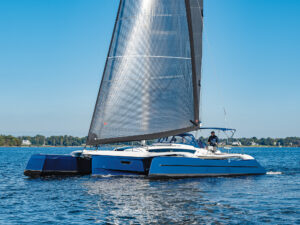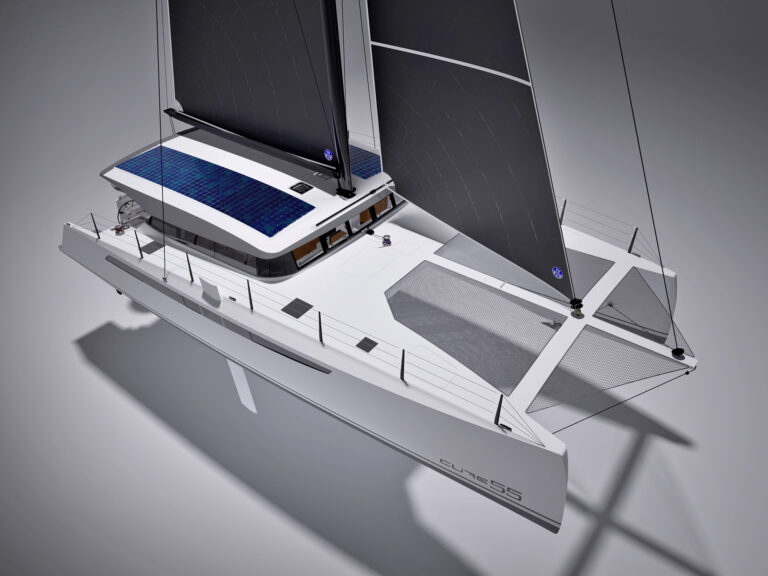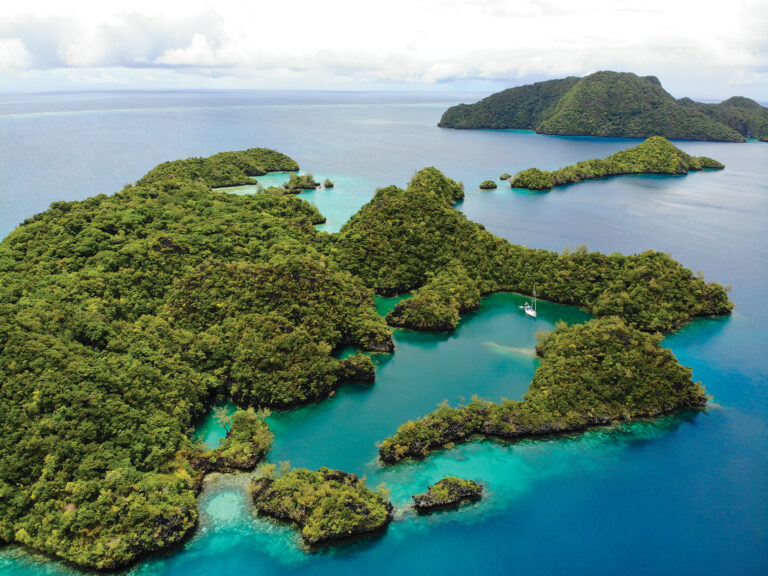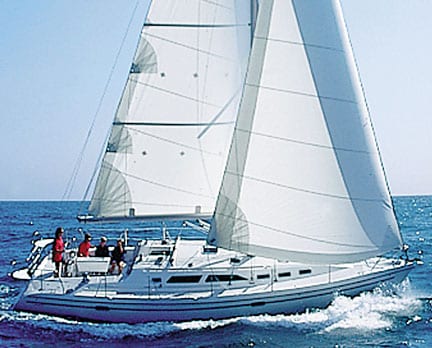
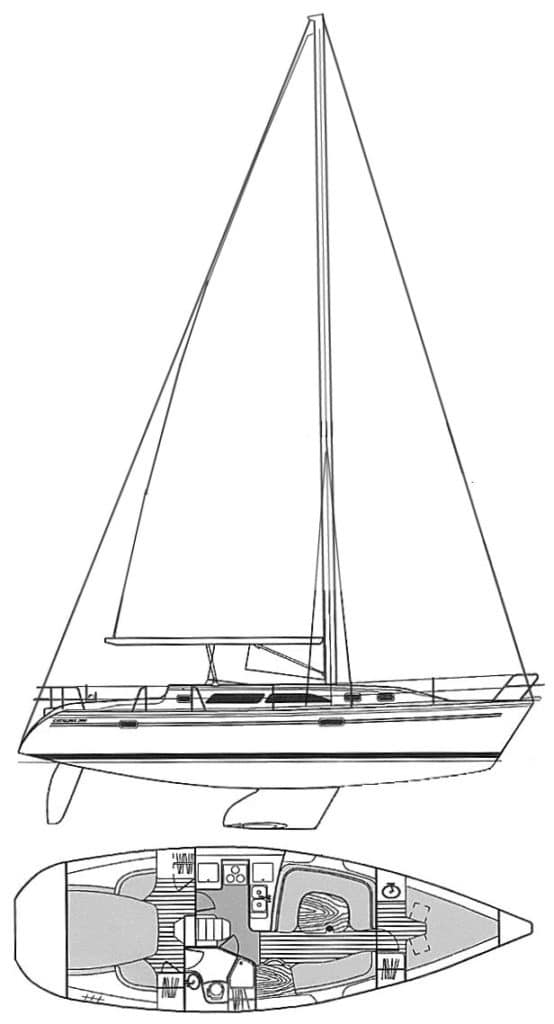
Catalina 380
When one of the biggest production sailboat builders in the world corrals top honors in a no-holds-barred fleet of extremely able contenders — including some candidates that fetch tens of thousands of dollars more than the winning yacht — it’s time to take serious notice. So gather around for a look at the breakthrough 1997 Midsize Cruiser Of The Year — the Catalina 380.
The Catalina 380 was designed and built for weekend and vacation sailing with the added capability of an occasional offshore jaunt and extended sabbatical cruise. When the choices narrowed during final deliberations, the judges pondered a simple question: Of the 10 boats in the class ranging from 32 to 39 feet, which would they choose were they about to embark with their families on a no-nonsense voyage of 1,000 miles or so, culminating in a season aboard cruising Mexico or the Caribbean? The nod went to the larger of two impressive new Catalinas.
Size was of course a factor, but so too was value. With a base price of under $125,000 in true sailaway condition, the 380 is outfitted with a top-shelf list of gear and equipment. Among the standard components: Edson steering station, Schaefer roller furling, Adler Barbour refrigeration, Westerbeke 42-horsepower diesel engine, Maxwell windlass, Autohelm instruments for wind, speed and depth, Lewmar winches, Dutchman mainsail system, Z-spar mast, Garhauer blocks, and Spinlock rope clutches.
Catalina engineer Gerry Douglas and his design team canvased the opinions of previous Catalina owners, particularly those who’d owned and sailed models in the builder’s 32- to 36-foot range. In the layout down below, the consensus was to eliminate the double heads featured in a previous Catalina 38 in favor of a big single head, to install more storage (three cedar-lined hanging lockers plus a dedicated wet locker), and to include a good navigation station (with its own comfortable, spring-loaded seat).
All pumps are centrally located and well labeled for trouble-free servicing. Engine access is outstanding, as good as it gets on a boat this size; a “wet area” for fuel and water filters contains leaks and contributes to a dry bilge. Anchor chain is led below by way of a straightforward chute that provides an excellent fairlead. Ventilation, by way of six cabin-top hatches and eight opening ports, is plentiful. In the interest of simplified maintenance, there’s not a splinter of topside teak. With a very complete, fully indexed manual, it’s a boat meant to be looked after by its owner — not by a high-priced service yard.
Construction is simple, but stiff and strong. A separate molded grid section is bonded into the solid fiberglass hull while it’s still in the mold. The hull liner — sometimes relied upon for structural support in production building, but redundant on this boat due to its independent glass grid — is then installed over a layer of cavity-filling foam. It’s a new process for Catalina, and one they’re pleased with. The external lead keel is available in fin or wing options; it is secured with bolts to American Bureau of Shipping (ABS) standards. The hull/deck joint consists of an external flange bonded and bolted in place and capped with a sturdy vinyl rub rail.
For the accommodation plan, there is a choice between dual aft cabins or a single aft stateroom; the latter version was entered in the Boat Of The Year competition. There are fiddles and bins and shelves in both cabins for storage and loose stuff. The dining table drops down within the wraparound settee to form an “emergency” double. The head, to starboard, is accessed either from the aft stateroom or from the central saloon. On the opposite side of the companionway, the galley revolves around a two-burner propane stove unit. There’s plenty of counter space, a double sink and even an overhead “island” for cups and glasses.
Topside, the Catalina 380 is equipped with a deck-stepped, two-spreader rig available in standard or tall versions. The mainsheet and traveler are set up in a mid-boom arrangement forward of the companionway with the double-ended sheet eventually led aft to a pair of coach roof-mounted winches. Halyards and reefing lines also are brought aft to group the bulk of sail-handling chores in a safe, centralized location. The deck is arranged around a huge, uncluttered cockpit, the centerpiece of which is a fixed drop-leaf table for dining at anchor. A walk-through transom completes the back end of the boat.
Reading between the lines, the non-dimensional numbers for the 380 tell an interesting story. With a Displacement-to-Length ratio of 249, the Catalina registers a slightly more conservative figure than that generated by the venerable Valiant 40 (Disp/Length = 240), a design introduced almost 20 years ago and widely thought to signal the birth of the so-called “performance cruiser.” But with a Sail Area/Displacement number of 17.3 for the tall rig — compared to the Valiant’s 16.47 — there’s plenty of compensating power in the sail plan. Perhaps most surprising, with a displacement of 19,500 pounds, the 380 is about the heaviest boat in this year’s midsize class. Any way you look at it, this is a substantial vessel. Combine that with sprightly sailing qualities and generous interior volume and you’ve got a winner.


